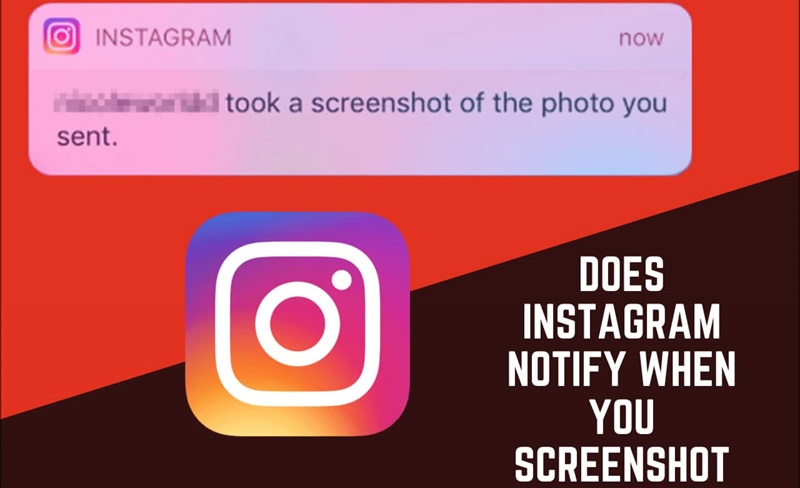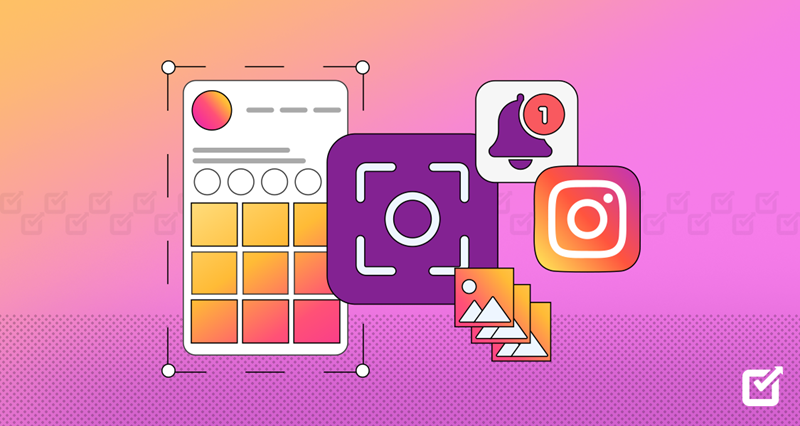Instagram’s screenshot notifications feature is an important aspect of the popular social media platform. Users need to be aware of how this function works to ensure they maintain their privacy and respect the privacy of others. When you screenshot a disappearing photo or video in a direct message conversation, Instagram sends a notification to the person who sent the message.
However, if you screenshot a regular post, story, or most other content, Instagram does not notify the user who posted it. This feature has been implemented to maintain a balance between privacy and freedom of expression on the platform. It’s important to note that while Instagram’s policy has changed over time, as of now, screenshots of direct messages are the only ones that trigger a notification.
Therefore, it’s crucial to understand this feature to avoid unintentionally invading someone’s privacy or causing discomfort. Remember, social media is all about building connections and creating a safe space for interaction, and understanding such features helps maintain a positive and respectful environment.
Do Instagram Users Get Notified About Screenshots?
Instagram is a widely used social media platform, with millions of users worldwide sharing and interacting with content daily. A common question among users relates to the platform’s policies on screenshot notifications. As of now, Instagram does not notify users when someone takes a screenshot of their profile, posts, reels, or even most direct messages.
This means that you can screenshot a user’s posts, stories, or profile without them knowing. However, there is a caveat when it comes to disappearing photos and videos in direct messages. If you send a disappearing photo or video in a direct message conversation, Instagram will notify you if the recipient takes a screenshot of that particular content.
This feature aims to maintain the privacy and autonomy of user interactions on the platform, particularly in private conversations. Nevertheless, the current setup allows for a significant amount of freedom when it comes to capturing and saving content from public profiles and posts.
Users should be aware of this when posting content and adjust their privacy settings accordingly if they wish to limit who can view and potentially screenshot their posts. It’s a delicate balance between maintaining user privacy and allowing the free exchange of content that makes platforms like Instagram thrive.

Screenshot Alerts: How Instagram Handles Posts and Stories
Instagram, a widely popular social media platform, has developed an interesting way of alerting users when their content is captured via screenshots. This innovative functionality primarily targets the platform’s Stories feature, a temporary method of sharing photos or videos with your followers that disappear after 24 hours.
When a follower takes a screenshot of your story, Instagram sends an alert to notify you, providing a layer of transparency and discouraging unwanted screenshotting. It’s important to note that this alert feature is not currently applied to regular posts, so users would not be aware if a screenshot is taken of these. This measure taken by Instagram is part of their ongoing effort to enhance user privacy and control over their shared content.
The alert system has generated mixed reactions among Instagram users, with some appreciating the extra layer of privacy, while others are concerned about the potential for misuse. Nevertheless, Instagram continues to refine and improve its features, ensuring that the platform remains a secure environment for sharing and interacting with content. The screenshot alert feature is just one of many ways Instagram is addressing concerns regarding user privacy.
It’s worth noting that Instagram has not officially confirmed this feature, and it seems to be used inconsistively across the platform. However, the existence of such a feature underscores the priority Instagram places on user privacy and control. As Instagram continues to evolve, it’s plausible that we may see further enhancements to privacy features, including more comprehensive and consistent usage of screenshot alerts.
Preventing Screenshots: Is It Possible to Protect Your Instagram Content?
In the digital age, it’s not uncommon for people to share and repost content they find interesting or entertaining. However, for Instagram content creators, this may pose a threat to their intellectual property rights.
One key concern is the ease with which users can capture screenshots of their content. The question then arises — is it possible to prevent screenshots to protect one’s Instagram content? The short answer is no. Instagram currently does not have a feature that prevents users from taking screenshots, unlike Snapchat which notifies the user when a screenshot of their content has been taken.
This means that anyone can capture, save and redistribute your content without your knowledge or consent, which can be particularly problematic for artists, photographers, and other creative professionals who earn their livelihoods from their creative output. There are, however, certain measures you can take to protect your content.
Using watermarks is one effective strategy, as it ensures that your content is always linked back to you, regardless of where it is reposted. Another method is to share lower-resolution images, which may discourage others from reposting due to the lower quality. Additionally, Instagram’s copyright reporting tool allows you to report instances where you believe your content has been misused.
While these steps may not completely prevent screenshots, they can help deter unauthorized use and ensure your content is properly credited. Therefore, while Instagram may not offer built-in screenshot prevention, content creators can take proactive steps to safeguard their work.

Maximizing Your Social Media Privacy
Social media is a powerful tool that enables us to connect with others, share experiences, and access information from around the globe. However, it also presents certain privacy concerns. To maximize your social media privacy, it is essential to understand the various settings and features that platforms offer. Regularly updating your privacy settings is a crucial first step.
Most platforms offer options to limit who can see your posts, contact you, or even find your profile in a search. It’s also recommended to be selective about the details you share online. Information such as your home address, phone number, or personal email should never be publicly available. Additionally, you should be cautious about third-party apps and quizzes that require access to your social media profile, as they often collect data. It’s also essential to be mindful of the photos and statuses you post.
Remember, once something is online, it can be challenging to remove it completely. Be sure to log out of your accounts when using shared computers and regularly change your passwords. Also, consider using different passwords for each platform to reduce the risk if one account gets compromised.
Lastly, educate yourself about the latest scams and phishing techniques to avoid falling victim to them. By taking these precautions, you can enjoy the benefits of social media while maintaining control over your personal information.

What to Do If You’re Concerned About Screenshots
If you find yourself anxious or troubled over the possibility of your sensitive information being captured through screenshots, there are several steps you can take to protect your privacy. First and foremost, be cautious about what you share online. Whether on social media, in emails, or through instant messaging, always assume that anything you send could potentially be saved and shared without your consent. This includes not only text, but photos, videos, and other media as well.
Another precaution to take is to utilize platforms that offer screenshot notification features. For example, some social media platforms notify you if a screenshot is taken of your content. While this doesn’t prevent someone from taking a screenshot, it at least alerts you to the fact that it has occurred.
Moreover, consider using encryption and secure communication tools for sensitive discussions. These platforms typically have built-in protections against screenshots. For instance, some offer a «self-destruct» feature, where messages disappear after a certain period of time.
Finally, educate yourself about the privacy settings on your devices and the platforms you use. Frequently updating your privacy settings can help protect your information from being captured in screenshots. It’s also important to understand how screenshots work on different devices and platforms. Some may automatically save screenshots to a cloud storage service, which could be an additional privacy concern.
In conclusion, while it’s nearly impossible to completely prevent someone from taking a screenshot of your content, there are measures you can take to protect your information. Being cautious about what you share, using platforms with screenshot notifications, taking advantage of secure communication tools, and regularly updating your privacy settings can all contribute to your digital safety.

